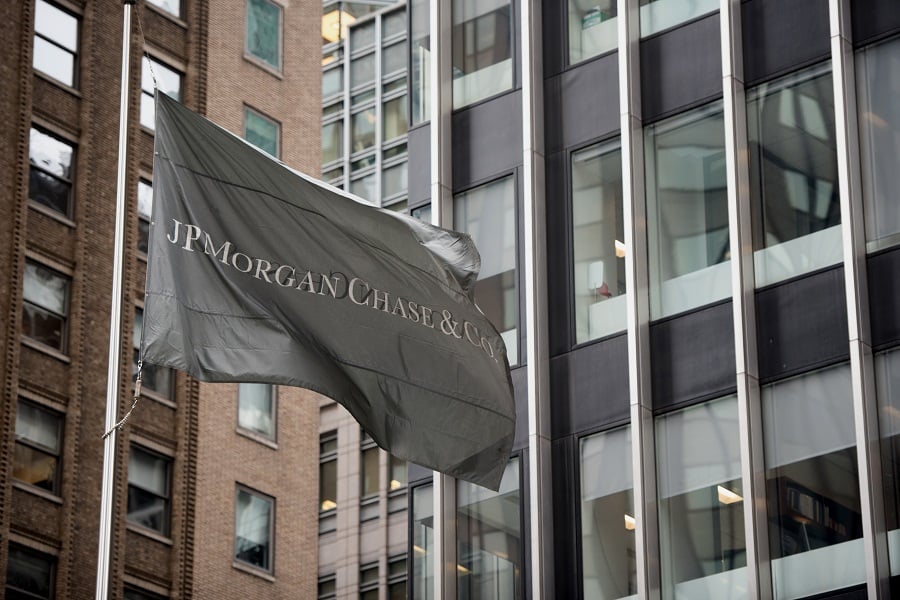

JPMorgan Chase & Co. announced a significant hike to its annual tech budget last week, which executives warned could lead the investment bank to fall short of profit expectations well into 2023.
The increase of more than 26% in what JP Morgan is calling its “tech-adjacent” spending pushed technology investments at the firm to $12 billion for the year, up from $9.5 billion in 2020. The largest U.S. bank also reported record profits and plans to build 400 new branches, a major reason for the increased expenditure.
The tech boost was a hot topic in a follow-up earnings call among analysts, who wanted to know what types of returns can be expected and questioned CEO Jamie Dimon about the company’s decision.
“There's fintech competition, there's PayPal competition,” Dimon responded. “It's a lot of competition, and we intend to win. And sometimes you [have to] spend a few bucks.”
The company also broadened the parameters of what it considers technology, going well beyond just software development, to include investments in data and analytics, and artificial intelligence, as well as the physical aspects of modernization, such as data centers.
“And what's really powerful to note here is our ability to make these investments, which are quite significant in dollar terms, and are designed to secure our future, while still delivering excellent current returns,” Jeremy Barnum, JPMorgan’s chief financial officer, said during the call.
Also earmarked in budget is capital for future fintech acquisitions. JPMorgan was at the heart of some of the biggest fintech deals of 2021, including its acquisition of 55ip, a provider of model portfolios and automated tax technology, and OpenInvest Co., a technology platform that helps financial professionals customize and report on ESG-based investments.
In June, it purchased Nutmeg Saving and Investment Ltd., a U.K. digital wealth manager, in a move that formed the bedrock of JPMorgan’s retail digital wealth management offering across the pond.
The bank currently budgets its tech investments into two buckets — “run the bank” and “change the bank” — each of which accounts for roughly half in terms of capital allocation. Run-the-bank tech includes maintaining legacy infrastructure and keeping the lights on at local branches. Change-the-bank spend is about investing in the future, Dimon said.
One example is the company’s data strategy plan that enables it to extract value from its proprietary data set.
“When [you’re] going home on a Friday night, we can offer you — we know what you like to eat at a steakhouse — so you can hear, immediately, offers," he said. "And so, that's the real value.”
The world’s largest banks are betting that new technology, ranging from AI to robotic process automation and open-ledger blockchain systems, can help slash costs, while increasing customers and client assets. Bank of America Corp. reportedly spends around $14 billion a year on technology and operations, although true comparisons are difficult because of the way the firms break out their reporting.
Worldwide IT spending was projected to total $4.2 trillion by the end of last year, an increase of 8.6% from 2020, according to a July forecast by the research and consultancy firm Gartner Inc.
“Technology spending is entering a new build budget phase,” John-David Lovelock, a vice president at Gartner and author of the report, said in a release. “This means building technologies and services that don’t yet exist, and further differentiating their organization in an already crowded market.”
The $12 billion investment also pays for JPMorgan’s team of 50,000 technologists, according to a company blog post.
Migration to the cloud was top of mind for Dimon during the call, and he noted that roughly 30% to 50% of the firm’s apps and data will be moving to the cloud this year.
“I'd like to give you another example,” he said. “If we can spend $2 billion more and get to the cloud tomorrow, I would do that in a second.”

Looking to refine your strategy for investing in stocks in the US market? Discover expert insights, key trends, and risk management techniques to maximize your returns

Driven by robust transaction activity amid market turbulence and increased focus on billion-dollar plus targets, Echelon Partners expects another all-time high in 2025.

The looming threat of federal funding cuts to state and local governments has lawmakers weighing a levy that was phased out in 1981.

The fintech firms' new tools and integrations address pain points in overseeing investment lineups, account monitoring, and more.

Canadian stocks are on a roll in 2025 as the country prepares to name a new Prime Minister.
RIAs face rising regulatory pressure in 2025. Forward-looking firms are responding with embedded technology, not more paperwork.
As inheritances are set to reshape client portfolios and next-gen heirs demand digital-first experiences, firms are retooling their wealth tech stacks and succession models in real time.
